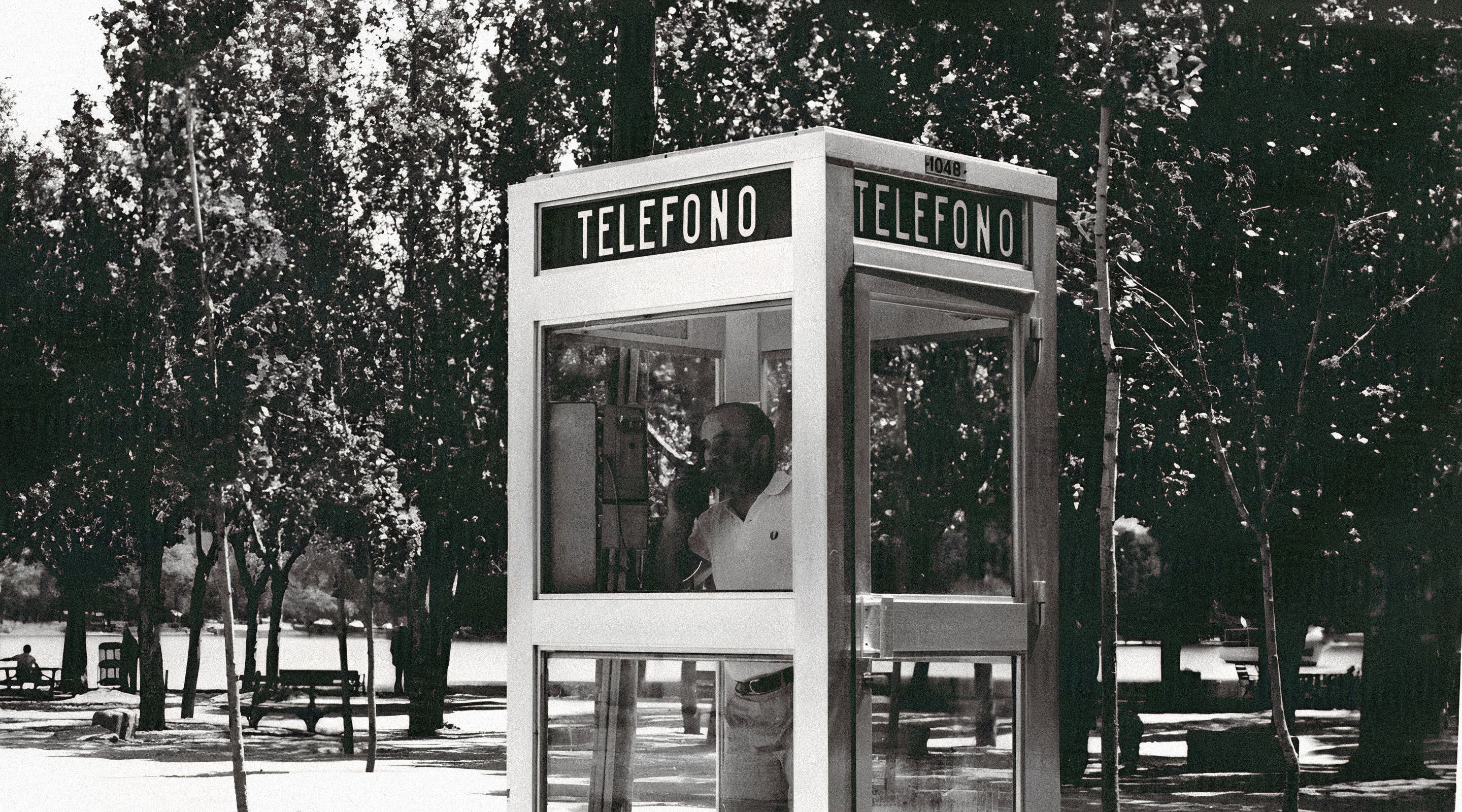
1966
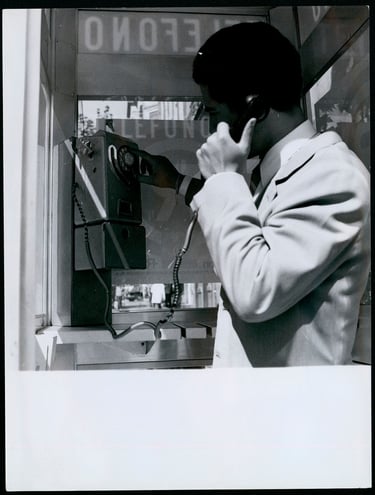
The booth is the first telephone that thousands of Spaniards knew and were able to use, especially in rural areas. The streets and squares were filled with this urban furniture that represents the history not only of Telefónica but also of Spain.
And the streets and squares were filled with booths
01
Indoor payphones are almost as old as the CTNE itself. The first was installed in Madrid's Retiro in 1928. And, since then, thousands of coin-operated telephones in bars, hotels, offices or call shops. But it was not until 1966 that telephones were installed on the streets. In their own "hut", at first more protected, then only with a post and two half walls. The emblematic cabins are born. These are the years when the demand for telephone lines is far ahead of the supply, so the booths come to alleviate a bit of that need for people to use the telephone. For many Spaniards, calling from one of our beloved phone booths was their first telephone experience, long before there was a Heraldo, a Góndola or a Teide in every living room. At its peak, just before the popularisation of the mobile phone, there were as many as 65,000 booths in the streets of our towns and cities. How many secrets they could tell us!
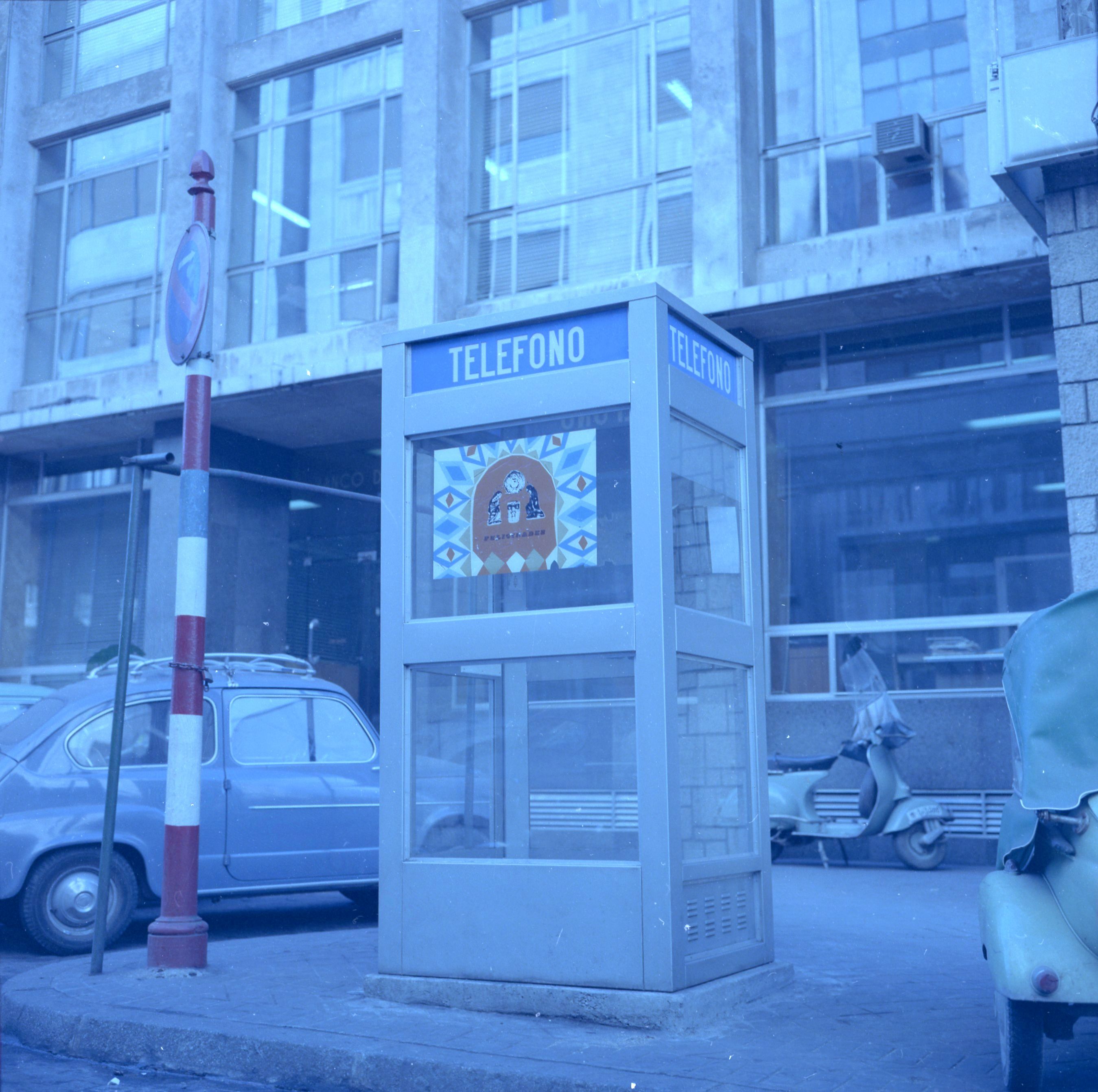
Investments, automation and quality: juggling the two sides of the coin
02
The company is growing fast and investment needs are increasing. Thanks to the successive capital increases and their positive reception by shareholders, Telefónica is able to make the necessary investments to install more and more kilometres of cables, more urban and interurban stations, and to continue automating its network. 1966 is a particularly busy year for the installation of circuits and the development of national and provincial networks for automatic subscriber-to-subscriber service. In the previous year, only Madrid, Barcelona and Zaragoza could boast of automatic exchanges. In 66, with much effort and investment, up to 13 more provincial capitals were included in this fortunate list. And all this, without losing focus on the quality of the service provided, a true commitment of President Barrera de Irimo.
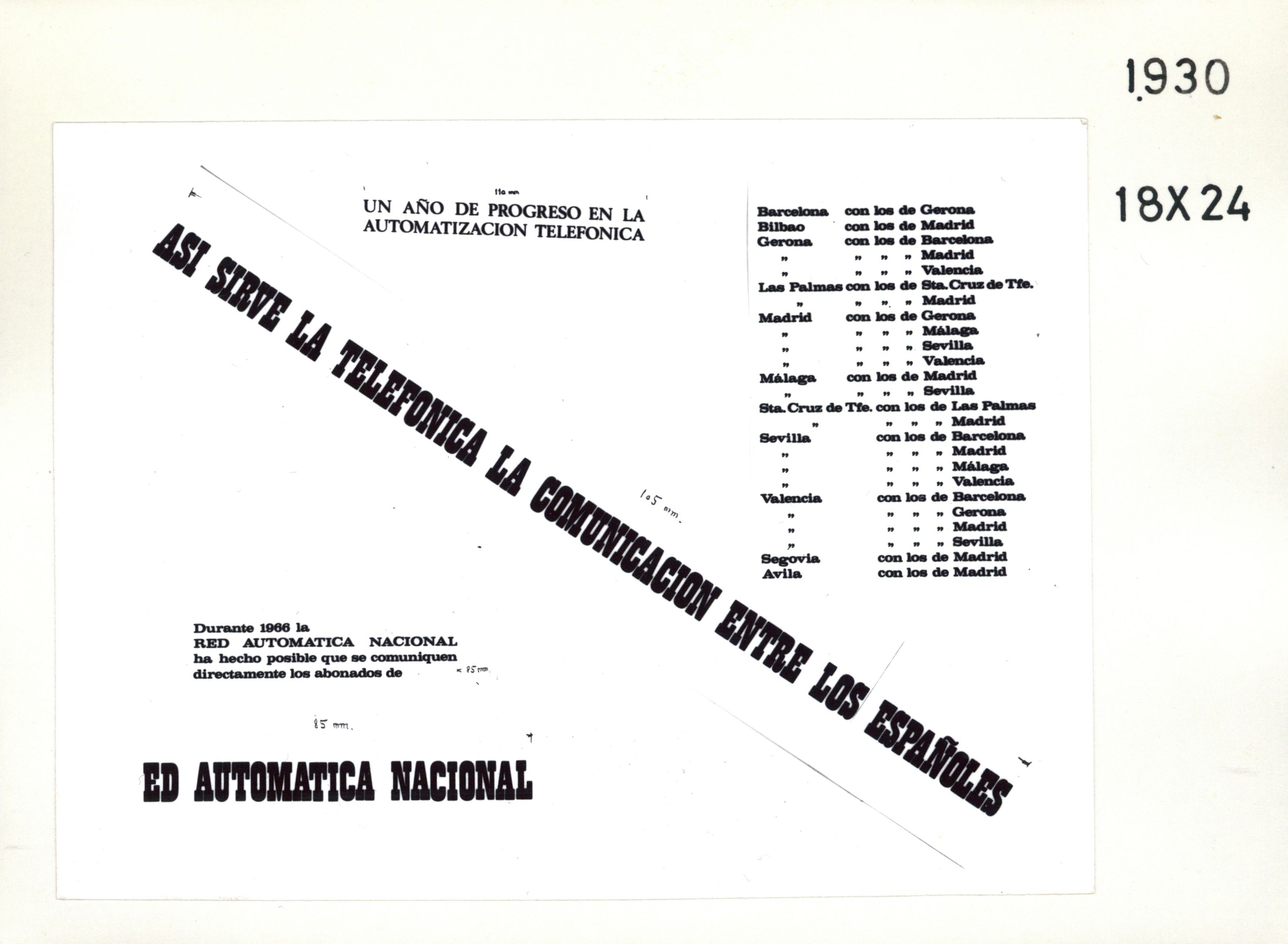
Talking to Telefónica
03
The popular NO-DO dedicated to Telefónica one of the instalments of its "Revista Imágenes", the 10-minute monographic documentaries in which subjects were dealt with in greater depth. Entitled "Al habla con Telefónica" (Talking to Telefónica), the informative piece covered the latest technological advances of the time and portrayed the importance of communications and telephony. With a sixties-style background music and shots filmed at the Gran Vía headquarters, the documentary shows a Spain that has already disappeared, through record telephones, conferences, telephone operators, telephone booths and calls to popular numbers such as 003 (for information) and 093 (to find out the official time).
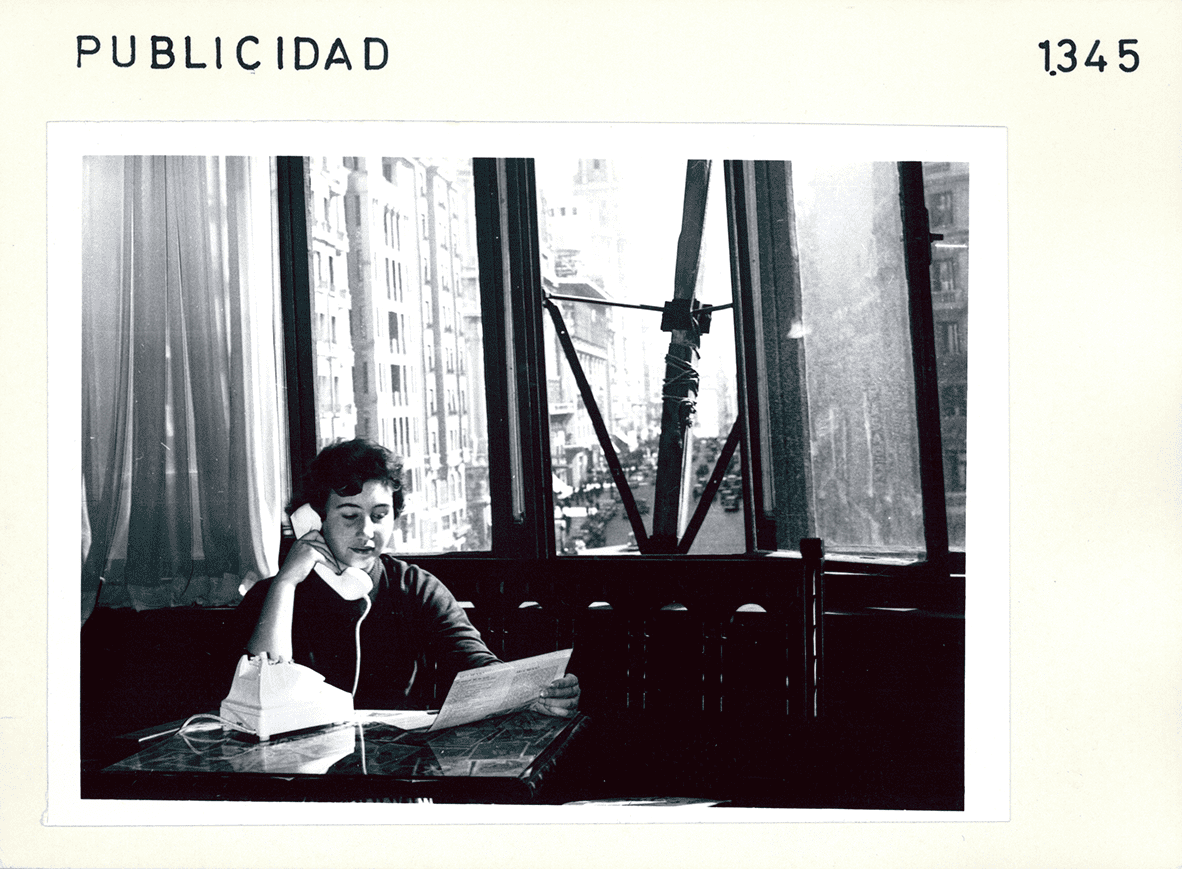
Do you have doubts about what happened?
Ask Aura